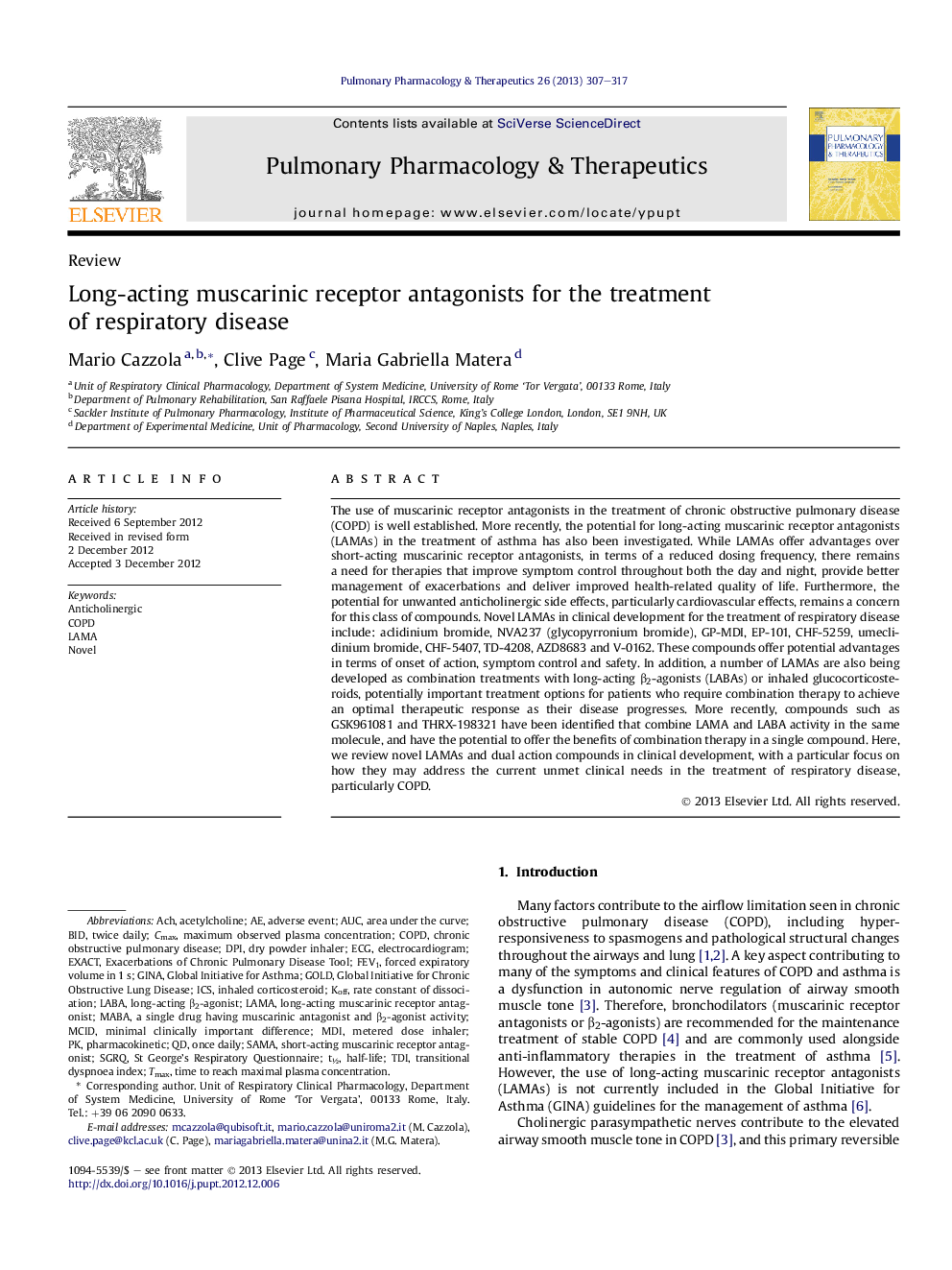| Article ID | Journal | Published Year | Pages | File Type |
|---|---|---|---|---|
| 2567162 | Pulmonary Pharmacology & Therapeutics | 2013 | 11 Pages |
The use of muscarinic receptor antagonists in the treatment of chronic obstructive pulmonary disease (COPD) is well established. More recently, the potential for long-acting muscarinic receptor antagonists (LAMAs) in the treatment of asthma has also been investigated. While LAMAs offer advantages over short-acting muscarinic receptor antagonists, in terms of a reduced dosing frequency, there remains a need for therapies that improve symptom control throughout both the day and night, provide better management of exacerbations and deliver improved health-related quality of life. Furthermore, the potential for unwanted anticholinergic side effects, particularly cardiovascular effects, remains a concern for this class of compounds. Novel LAMAs in clinical development for the treatment of respiratory disease include: aclidinium bromide, NVA237 (glycopyrronium bromide), GP-MDI, EP-101, CHF-5259, umeclidinium bromide, CHF-5407, TD-4208, AZD8683 and V-0162. These compounds offer potential advantages in terms of onset of action, symptom control and safety. In addition, a number of LAMAs are also being developed as combination treatments with long-acting β2-agonists (LABAs) or inhaled glucocorticosteroids, potentially important treatment options for patients who require combination therapy to achieve an optimal therapeutic response as their disease progresses. More recently, compounds such as GSK961081 and THRX-198321 have been identified that combine LAMA and LABA activity in the same molecule, and have the potential to offer the benefits of combination therapy in a single compound. Here, we review novel LAMAs and dual action compounds in clinical development, with a particular focus on how they may address the current unmet clinical needs in the treatment of respiratory disease, particularly COPD.
